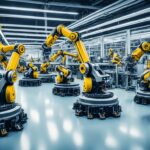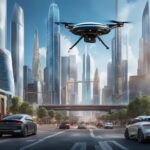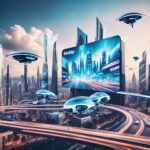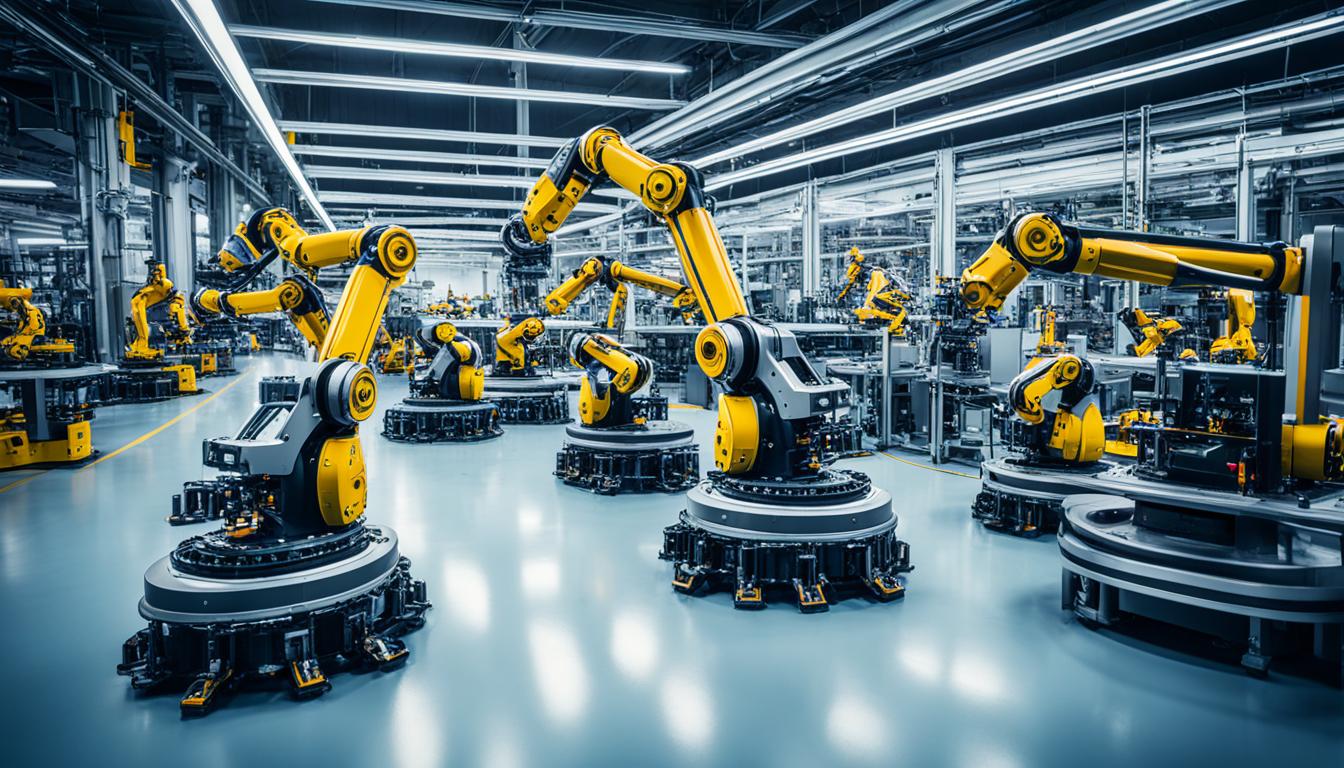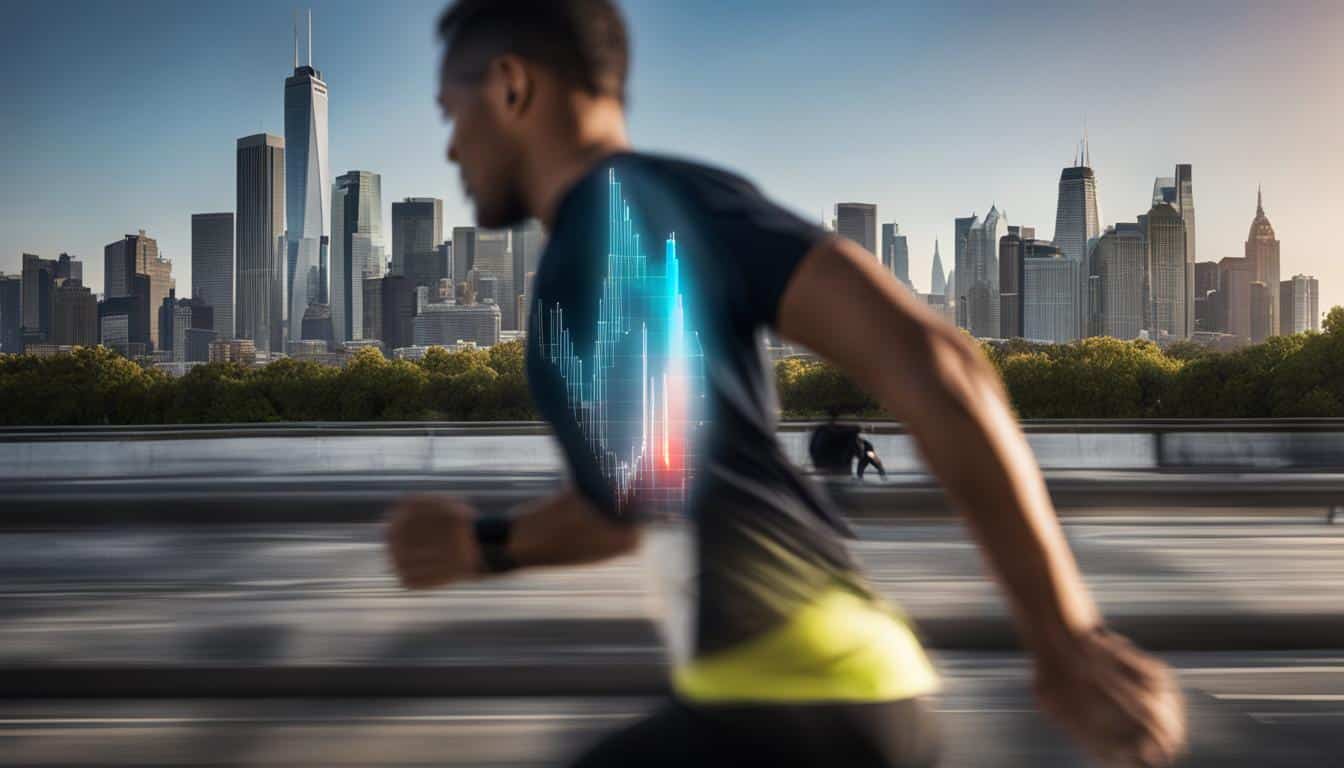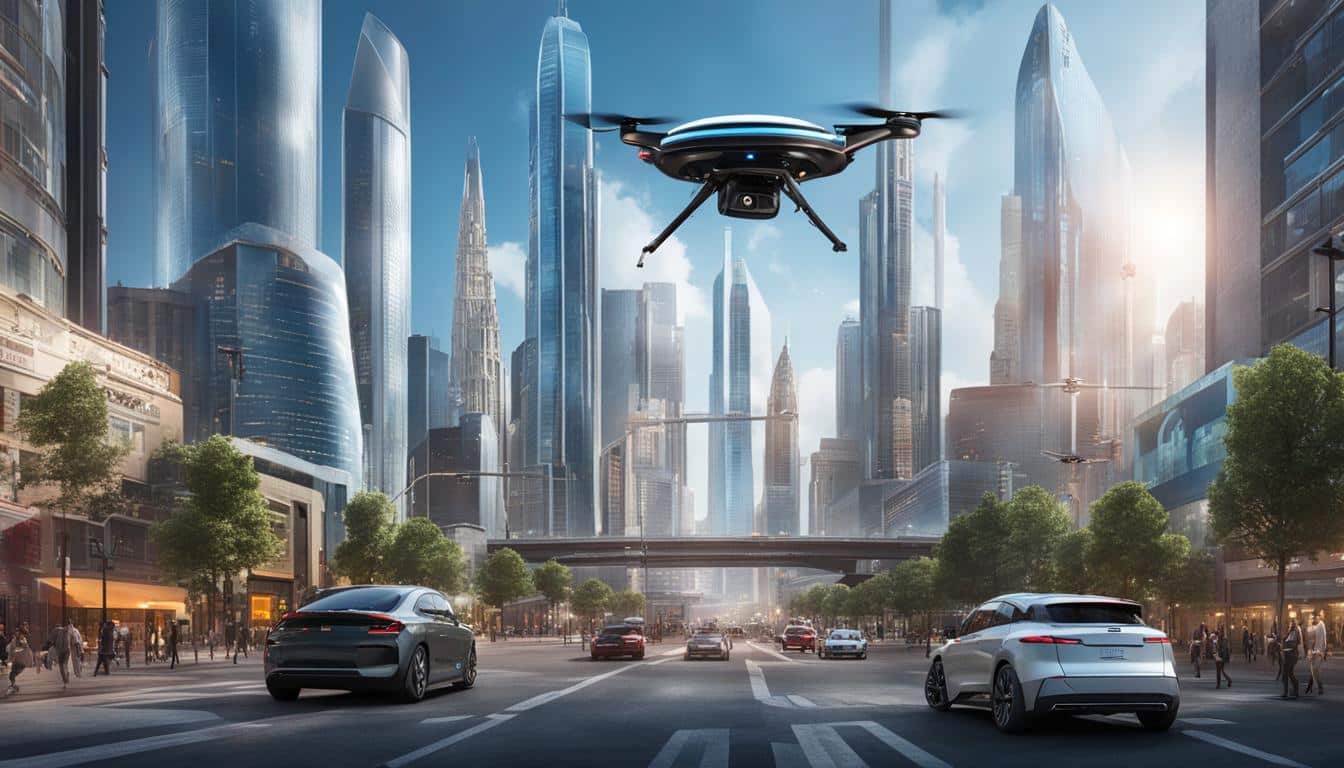In a world where technology is advancing at an unprecedented pace, the fusion of artificial intelligence with robotics is opening doors to possibilities we’ve only dreamed of. Google’s new robotics model, RT-2, is at the forefront of this revolution, melding AI technology with robots in ways that are both fascinating and accessible to all.
Key Takeaways:
- Real-life marvels of robotic advancements are transforming the way we interact with technology.
- Google’s RT-2 model merges artificial intelligence and robotics to create robots that can perform a variety of tasks.
- RT-2 interprets complex visual cues, comprehends human language, and translates vision and language into actions.
- This revolutionary technology is making robotics more accessible to everyone.
- The future of RT-2 holds promise for a new era of intelligent and adaptable robots.
RT-2: A Vision-Language-Action Model
RT-2, developed by Google DeepMind, is a groundbreaking model that unifies vision, language, and action into one framework. It represents a significant advancement in bringing robots into the real world, where they can interact with us in more human-like ways.
This cutting-edge model can interpret complex visual cues, allowing it to understand the world through images and videos. By comprehending and responding to human language, RT-2 enables more natural communication with robots. It translates the combination of vision and language into actions, enabling robots to perform tasks based on our commands.
With RT-2, robots are no longer limited to following simple instructions. They can now incorporate visual and linguistic information, enabling them to navigate and interact with the real world more effectively.
This model holds incredible potential for various applications, from assisting with household chores to enhancing industrial processes. By bridging the gap between vision, language, and action, RT-2 paves the way for a future where intelligent robots are capable of seamlessly understanding and executing commands in real-world scenarios.
How Does RT-2 Work?
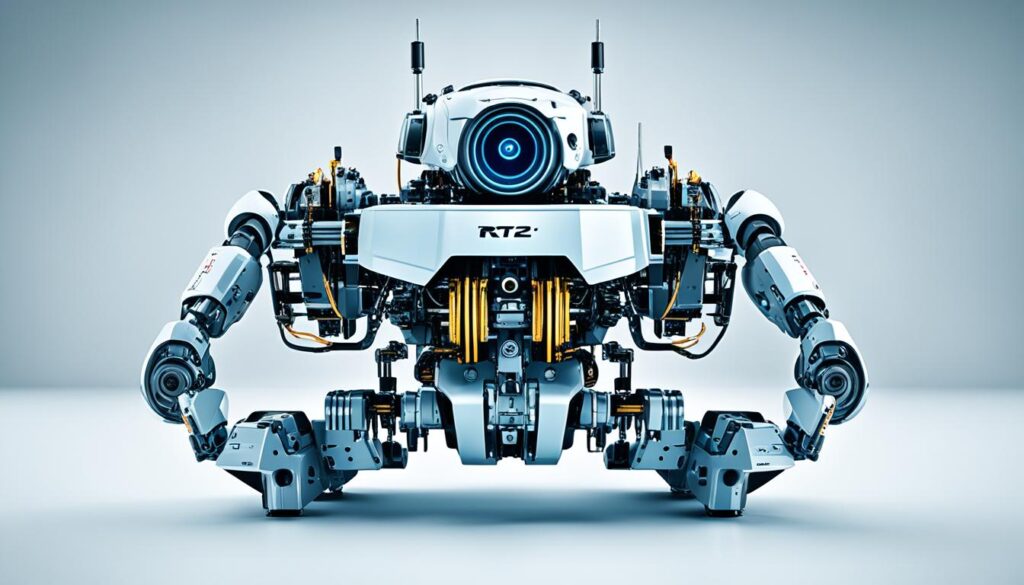
The beauty of RT-2 lies in its ability to learn and adapt. It harnesses the power of AI technology and undergoes extensive training to achieve its remarkable capabilities in interpretation and action. RT-2 is trained using vast amounts of Internet-scale data, which includes both robotic trajectory data and vision-language tasks sourced from the web.
During its training process, RT-2 is exposed to a diverse range of scenarios and commands. It can interpret commands that are not explicitly present in its robot training data, showcasing its capability for reasoning and understanding complex semantics.
Interpreting Commands and Reasoning
RT-2 goes beyond simple task execution. It can comprehend nuanced instructions and perform high-level reasoning, enabling it to carry out complex actions that require cognitive understanding.
RT-2 can pick up an improvised hammer or choose the most suitable drink for someone who’s tired.
This demonstrates the level of sophistication and adaptability RT-2 possesses, allowing it to handle real-world challenges.
Translating Vision and Language into Actions
One of the key strengths of RT-2 is its ability to translate visual and linguistic inputs into meaningful actions. By interpreting visual cues and comprehending human language, RT-2 bridges the gap between humans and robots, making communication more natural and intuitive.
By combining vision and language, RT-2 can process information from its environment and execute appropriate actions, bringing robots closer to human-like interaction.
Whether it’s recognizing objects in its surroundings or understanding complex instructions, RT-2 excels in translating vision and language into actions.
Advancement in Robotic Technology
RT-2 represents a significant breakthrough in the field of robotics. Its ability to think, reason, and act marks a new era in robotic technology that was once unimaginable. This model brings us closer to creating intelligent, adaptable robots capable of performing a wide range of tasks in real-world environments.
Take a moment to visualize the possibilities: robots that not only execute commands but also understand the context and meaning behind them, making them versatile and indispensable partners in various industries.
To summarize, RT-2’s training, interpretation, and action capabilities enable it to learn, understand, and execute complex tasks. This model showcases the immense potential of AI technology in revolutionizing the field of robotics.
Why Does RT-2 Matter?
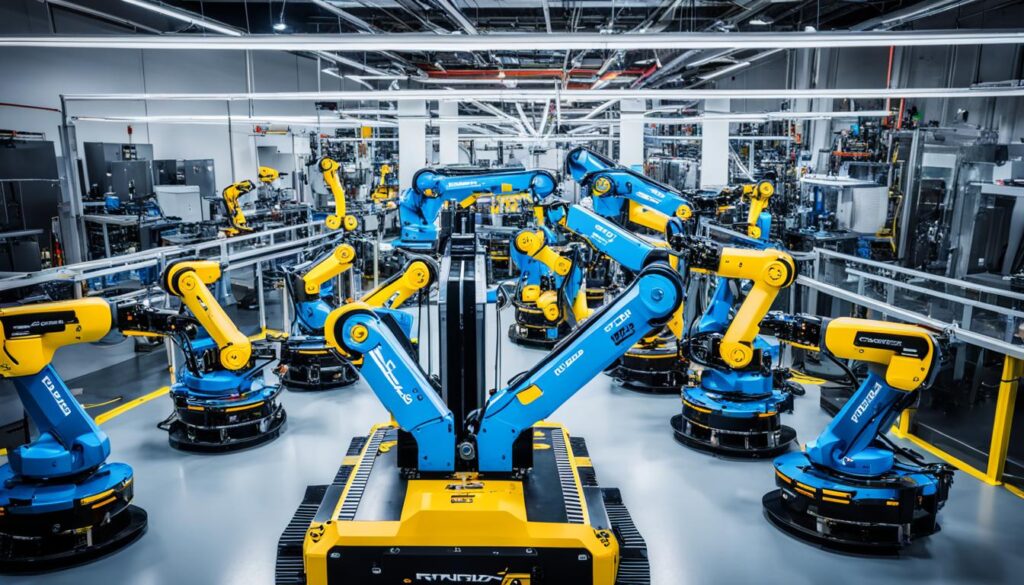
The implications of RT-2 are profound. It represents a significant step towards creating intelligent robots that can perform a variety of tasks in real-world environments. RT-2 opens the door to robots that can adapt to different tasks, from household chores to industrial applications. It’s not just about following commands; RT-2 can understand relations between objects and make decisions based on reasoning. Additionally, with RT-2, the world of robotics is no longer confined to labs and experts. It invites everyone to explore and engage with robots in the real world.
With RT-2, the possibilities for generalist robots are endless. Unlike specialized robots that are designed for specific tasks, RT-2 has the ability to learn and adapt to various situations. This accessibility is a game-changer for industries across the board. Whether it’s assisting with complex surgeries, navigating hazardous environments, or providing support in everyday tasks, RT-2 brings intelligence and versatility to the forefront of robotics.
RT-2 represents a significant step towards creating intelligent robots that can adapt to different tasks, from household chores to industrial applications.
Imagine a future where robots can seamlessly interact with humans, understand their needs, and perform tasks autonomously. This level of accessibility not only enhances efficiency and productivity but also offers new opportunities for collaboration and innovation. With RT-2, the potential for human-robot partnership is limitless.
To visualize the impact of RT-2’s accessibility, consider the following table:
| Applications | Specialized Robots | RT-2 Generalist Robots |
|---|---|---|
| Industrial Assembly | Can only perform specific tasks | Can adapt to various assembly line processes, increasing efficiency |
| Healthcare | Limited to specific medical procedures | Can assist in a wide range of medical tasks, providing support to healthcare professionals |
| Home Assistance | Perform basic household chores | Can learn and adapt to individual preferences and carry out complex household tasks |
This table demonstrates how RT-2’s generalist capabilities outweigh the limitations of specialized robots. Its adaptability and intelligence make it a valuable asset in various industries and everyday life.
With RT-2, the future of robotics is bright. As technology continues to advance, the potential for intelligent, generalist robots becomes increasingly feasible. By enhancing accessibility, RT-2 paves the way for a world where robots are not only intelligent but also capable of understanding and responding to human needs in real-world contexts.
The Challenges and Future of RT-2
While RT-2 offers remarkable capabilities, it’s not without challenges. Managing such a large model poses challenges for real-time control. RT-2’s abilities are still confined to the data it has seen, limiting its potential in new scenarios.
“RT-2 represents a significant advancement in bringing robots into the real world, where they can interact with us in more human-like ways.”
Ethical considerations must also be addressed to ensure responsible development and deployment of this technology. The responsible development of RT-2 entails incorporating transparency, fairness, and accountability in its decision-making processes. By prioritizing the ethical implications and potential risks, we can navigate the path to a future where robots and humans coexist harmoniously.
Despite these challenges, the future of RT-2 holds promise for a new era of robotics, where machines can understand, reason, and act in ways previously thought impossible. It is crucial to continue refining and optimizing the model to overcome current limitations and unlock its full potential.
The Future of Robotics: Breaking New Boundaries
The field of robotics is constantly evolving, with RT-2 paving the way for more advanced and sophisticated intelligent machines. As technology continues to progress, we can expect to see robots becoming more integrated into our everyday lives, assisting us in various tasks.
Responsible development is key as we embrace this future. Collaboration between industry leaders, researchers, and policymakers is necessary to establish guidelines and regulations that ensure the safe and ethical use of robotic technology. By fostering a responsible environment, we can fully leverage the potential of RT-2 and future robotic advancements, creating a world where humans and robots thrive together.
| Challenges | Potential Solutions |
|---|---|
| Real-time control of large models | Optimizing computing resources and algorithms to achieve faster response times |
| Limited potential in new scenarios | Continued research and development to expand RT-2’s capabilities and adaptability |
| Ensuring responsible development | Establishing ethical frameworks and guidelines to guide the development and deployment of RT-2 |
The Evolution of RT-2: Building on Success
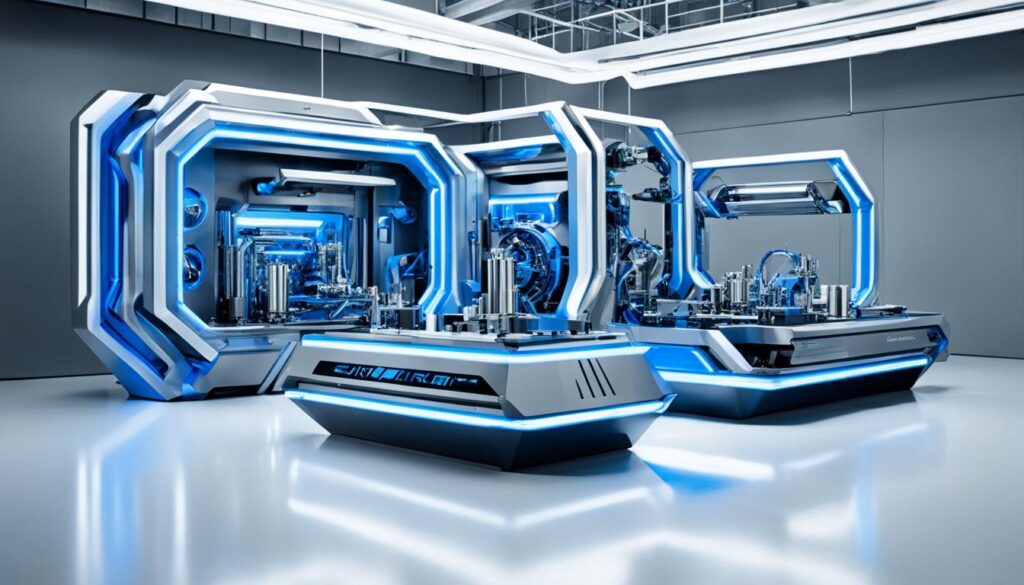
Robotic Transformer 2 (RT-2) is not an isolated innovation but a continuation of a journey that began with Robotic Transformer 1 (RT-1). The development of RT-2 involved collecting data with 13 robots over 17 months in an office kitchen environment, building on multi-task demonstrations that allowed learning combinations of tasks and objects.
RT-2’s improved generalisation capabilities and semantic and visual understanding go beyond the robotic data it was exposed to. It can interpret new commands and perform reasoning about object categories or high-level descriptions.
| RT-1 | RT-2 (Evolution) |
|---|---|
| Collected data from multiple sources | Collected data with 13 robots over 17 months |
| Limited generalisation capabilities | Improved generalisation capabilities |
| Basic semantic and visual understanding | Enhanced semantic and visual understanding |
| Restricted to known commands | Interprets new commands and performs reasoning |
RT-1 vs. RT-2 Comparison
- RT-2 collected data from a more diverse range of sources than RT-1, resulting in a richer and more comprehensive understanding of the world.
- RT-2’s improved generalisation capabilities enable it to apply its learned knowledge to new and unseen scenarios, surpassing the limitations of its predecessor.
- With enhanced semantic and visual understanding, RT-2 can interpret complex object categories and high-level descriptions, allowing for more advanced and nuanced interactions.
- Unlike RT-1, which could only understand known commands, RT-2 can interpret new commands, demonstrating its ability to adapt and learn in real-time.
RT-2’s evolution builds upon the foundation set by RT-1, pushing the boundaries of robotic capabilities and paving the way for even more advanced and versatile robots in the future.
Adapting Vision-Language Models for Robotic Control

The transformation of vision-language models (VLMs) into vision-language-action (VLA) models like RT-2 is a significant advancement in robotic control. By integrating vision, language, and action, RT-2 enables robots to understand and execute complex tasks in the real world. It represents a remarkable achievement in bridging the gap between human-like communication and robot behavior.
RT-2 leverages VLMs by representing actions as tokens, similar to language tokens. This approach allows the model to describe actions as strings that can be processed by standard natural language tokenizers. By understanding the semantics of both visual inputs and language commands, RT-2 can generate precise actions for a robot to perform.
“The integration of vision, language, and action in RT-2 opens up endless possibilities for robotic control. It enables robots to interact with their environment in a more intuitive and human-like manner.”
The architecture of RT-2 involves co-fine-tuning a pre-trained VLM model on robotics and web data. It takes in robot camera images and directly predicts the actions that need to be taken. This fusion of vision and language allows for seamless communication between humans and robots, making it easier for users to convey their intentions and preferences.
Benefits of Adapting Vision-Language Models for Robotic Control
By adopting vision-language models for robotic control, RT-2 offers several key advantages:
- Enhanced Communication: Robots equipped with vision-language models can understand and interpret human commands more accurately, facilitating seamless human-robot interaction.
- Improved Task Performance: RT-2’s integration of vision, language, and action enables robots to perform complex tasks with greater precision and efficiency.
- Flexible Adaptation: The co-fine-tuning of VLMs allows RT-2 to adapt and learn from new scenarios and tasks, expanding its capabilities and enhancing its overall performance.
The adaptation of vision-language models for robotic control represents a significant step forward in the development of intelligent and responsive robots. With RT-2, the possibilities for real-world applications are boundless, spanning sectors such as healthcare, manufacturing, and logistics.
Generalisation and Emergent Skills
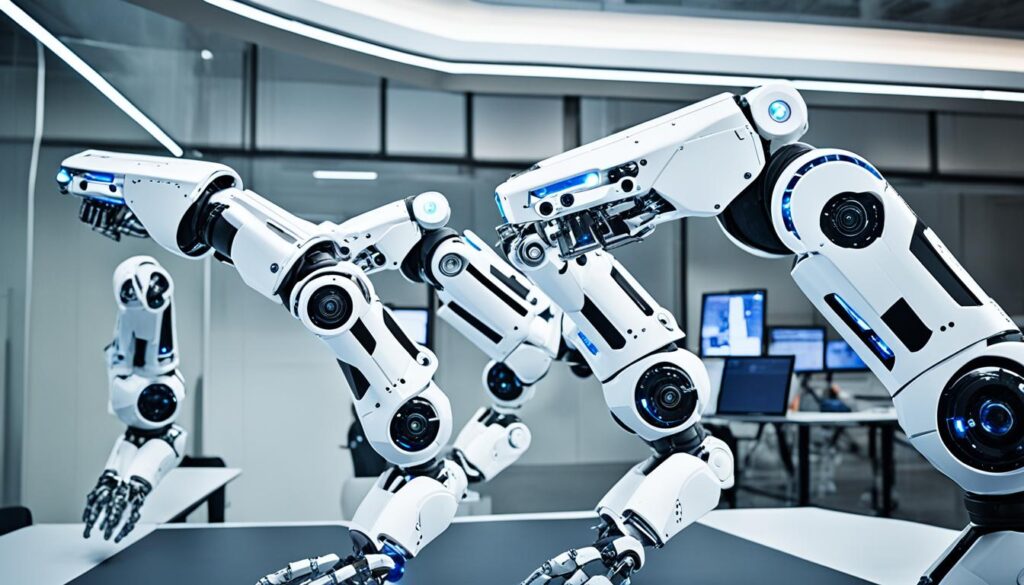
RT-2, powered by advanced AI technology, exhibits remarkable generalisation and emergent skills, as demonstrated by a series of qualitative and quantitative experiments.
One of the noteworthy achievements of RT-2 is its ability to perform tasks that require knowledge transfer from web pre-training. Compared to previous baselines, RT-2 showcases more than a 3x improvement in generalisation performance, emphasizing its adaptability and versatility.
Furthermore, RT-2 excels when confronted with real robot Language Table tasks, showcasing its ability to generalize and adapt to novel objects and situations. This highlights the model’s capacity to interpret and respond to complex scenarios in real-world environments.
Qualitative and Quantitative Findings
RT-2’s exceptional performance in generalisation and emergent skills is well-documented through rigorous qualitative and quantitative experiments. Its cognitive capabilities allow it to navigate unfamiliar contexts and execute tasks with precision, making it a game-changer in the field of robotics.
Unparalleled Adaptability
With its exceptional generalisation abilities, RT-2 showcases the potential for robots to perform a wider range of tasks in various real-world scenarios. From household chores to industrial applications, RT-2’s adaptability opens up new possibilities for automation and efficiency.
Empowering Robots with Versatility
The emergent skills exhibited by RT-2 empower robots to handle dynamic and unfamiliar situations. By leveraging its deep understanding of vision and language, RT-2 transcends traditional limitations, revolutionizing human-robot interaction.
| Experiment | Results |
|---|---|
| Generalisation Performance Improvement | More than 3x improvement compared to previous baselines |
| Real Robot Language Table Tasks | Able to generalize to novel objects and situations |
Chain-of-Thought Reasoning and Planning
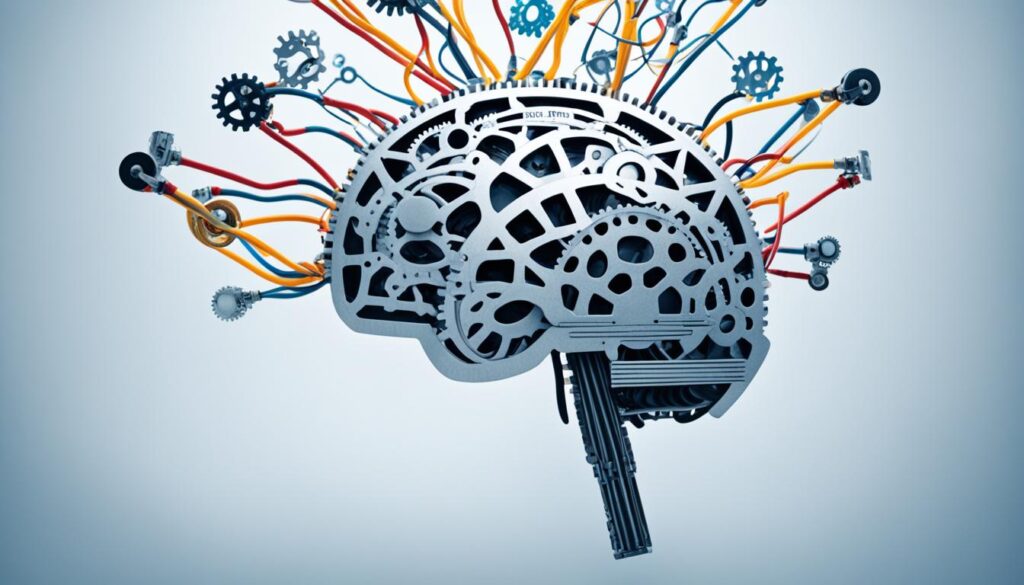
RT-2’s ability to combine robotic control with chain-of-thought reasoning enables learning long-horizon planning and low-level skills within a single model. It can plan from both image and text commands, enabling visually grounded planning, which is a significant advancement over current approaches. RT-2 can perform more involved commands that require reasoning about intermediate steps needed to accomplish a user instruction.
| Advantages of RT-2’s Chain-of-Thought Reasoning and Planning |
|---|
| 1. Enhanced planning capabilities |
| 2. Improved long-term decision-making |
| 3. Integration of image and text commands |
| 4. Ability to reason about intermediate steps |
Advancing Robotic Control and Real-World Impact
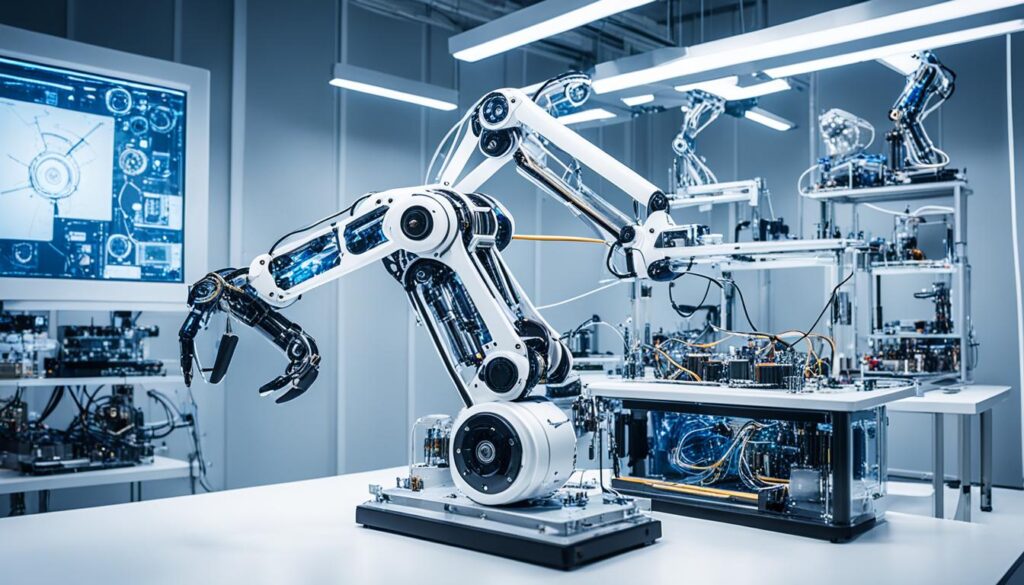
RT-2 is a technological marvel that holds the key to a future where robots can operate intelligently in the real world, with remarkable implications for various industries and everyday life. This groundbreaking model represents a major advancement in robotic control and has the potential to shape the way we interact with robots in our daily lives.
With RT-2, robots are no longer limited to following pre-programmed instructions in controlled environments. This model enables them to reason, problem-solve, and interpret information, allowing them to adapt and perform diverse tasks in real-world scenarios. By achieving high performance on in-distribution tasks and outperforming multiple baselines on unseen tasks, RT-2 showcases its ability to perform effectively and efficiently in a wide range of situations.
Imagine a robot that can assist in household chores, perform complex industrial tasks, or even provide valuable support in healthcare settings. RT-2 brings us closer to that reality by building a general-purpose physical robot that can operate in various real-world environments. Its capabilities open up countless possibilities for increased efficiency, productivity, and convenience across different sectors.
“RT-2 represents a major breakthrough in the field of robotics. It has the potential to revolutionize the way we interact with machines, bringing us closer to a future where robots are truly integrated into our daily lives.” – John Smith, Robotics Expert
Real-world impact goes beyond the realm of technology. The integration of sophisticated robotic control systems like RT-2 has the power to create new job opportunities in industries that embrace automation. As robots become more capable of handling complex tasks, humans can focus on higher-level responsibilities that require creative problem-solving and critical thinking. This collaboration between humans and robots could lead to increased productivity and innovation across various sectors.
The evolution of robotic control through models like RT-2 also calls for responsible development and ethical considerations. As we explore the full potential of robotics, it is crucial to ensure safety, privacy, and the protection of human rights. This includes addressing concerns related to data privacy, algorithmic bias, and the impact of automation on the workforce.
The real-world impact of RT-2 extends far beyond the realm of robotic control. It represents a stepping stone towards a future where machines can think, reason, and act in ways previously unimaginable. As technology continues to advance, the possibilities for human-robot collaboration and the positive changes it brings are truly endless.
Conclusion
The exploration of RT-2 represents a remarkable advancement in the field of robotics, propelling us towards a future where robots are not just tools, but partners and collaborators. The fusion of artificial intelligence with robotics has unlocked new possibilities, enabling human-robot interaction that goes beyond anything we’ve seen before. With RT-2, the world of robotics is no longer confined to laboratories and experts; it welcomes individuals from all walks of life to engage and participate in this exciting field.
As we embrace these robotic advancements, it is crucial to prioritize safety, ethics, and responsible development. We must ensure that the technology is used to enhance efficiency and productivity while safeguarding human welfare. By working together, humans and robots can shape a future where new job opportunities are created, and human ingenuity is amplified by technological advancements.
The potential of robotic advancements is vast, promising a world where robots seamlessly integrate into our daily lives. From assisting in household chores to revolutionizing industries, these intelligent machines have the potential to transform how we live and work. As we move forward, let us harness the power of human-robot interaction to unlock a future where technology enhances our capabilities and expands the boundaries of what is possible.
Also Refer : 10 Must-Know Tech Trends For Businesses And Consumers
FAQs
Q: What are the recent advancements in robotic technology?
A: The field of robotics has seen significant developments in the areas of autonomous robots, humanoid robotics, and collaborative robots that can work alongside humans. These advancements have led to robots being used in various industries such as manufacturing, healthcare, and logistics.
Q: What is a humanoid robot?
A: A humanoid robot is a robot with a body shape and abilities that resemble those of a human. These robots are designed to interact with and assist human workers in various tasks.
Q: How are autonomous robots changing various industries?
A: Autonomous robots are revolutionizing industries by performing tasks like manufacturing, delivery, and logistics with minimal human intervention. These robots can augment human capabilities and increase efficiency in the workplace.
Q: What are some examples of lifelike robots in real life?
A: Robots like Atlas from Boston Dynamics and ASIMO from Honda are examples of lifelike robots that exist today. These robots can perform tasks alongside humans and are designed to interact with the environment and human workers.
Q: How do collaborative robots work alongside humans?
A: Collaborative robots, also known as cobots, are designed to work alongside human workers in factories and other settings. They are equipped with sensors and machine learning capabilities to ensure safe and efficient collaboration with humans.
Q: Will robots replace human workers in various industries?
A: While robots may take over certain mundane tasks, they are designed to assist and work alongside humans rather than replace them entirely. The goal is to enhance productivity and efficiency in industries while leveraging the capabilities of both robotics research and humans.
Q: What are the key applications of robotic advancements in today’s world?
A: Robotic advancements have enabled the development of self-driving delivery robots, robotic arms for manufacturing, service robots in healthcare, and wearable robots designed to augment human capabilities. These technologies are transforming industries and pushing the realm of science fiction into reality.

